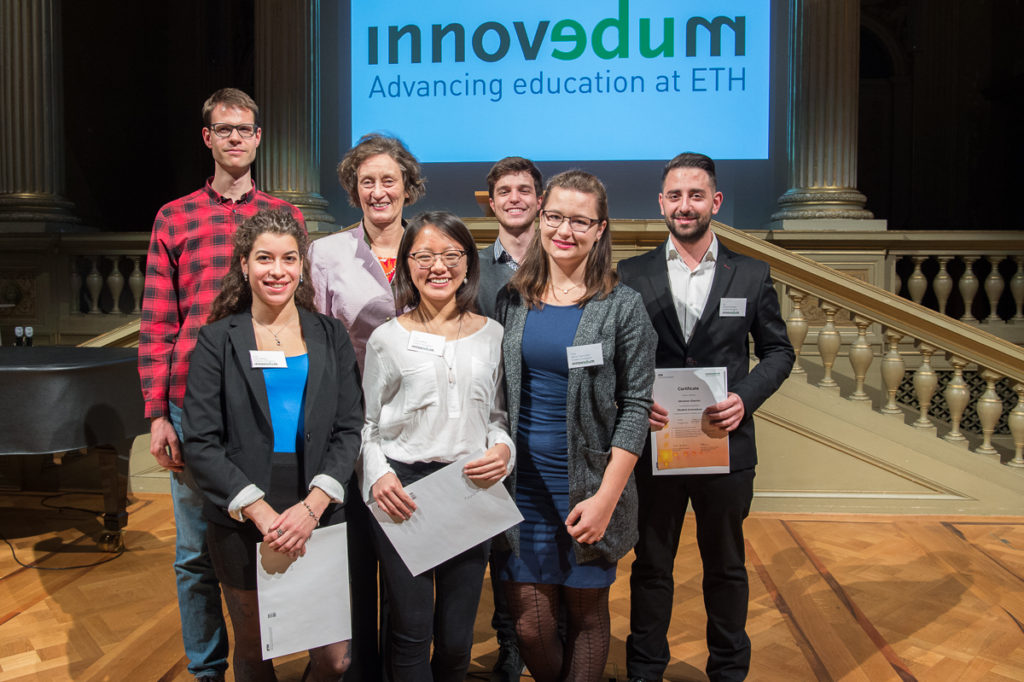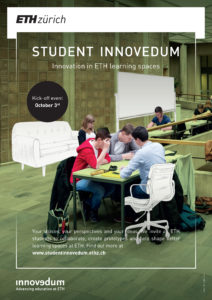Multifunctional Open Space
Improved learning environment for future ETH students to study, collaborate, and innovate

Martin Buchacek, Iliana Mebert, Dr. Sarah Springman, Xiaying Wang, Leonard Deuschle, Marie-Claire Graf, Giannis Gkremos. Photo: Heidi Hostettler
By Marie-Claire Graf, Xiaying Wang, Iliana Mebert, Leonard Deuschle, Giannis Gkremos, Martin Buchacek
Problem statement: At ETH, the students are dealing with a cold, loud, crowded and most of all unthoughtful learning experience every day. Research by Ronald Beckers, Theo van der Voordt and Geert Dewulf (2015) shows that in addition to classroom settings, there are three additional importance settings for learning: Collaborative settings, individual study settings and informal learning settings.
Following a survey of over 2000 bachelor and master students a number of insights were gained. The average satisfaction was barely 60%, meaning there is definitely room for improvement. The features students feel that ETHZ learning spaces are lacking were: quiet individual study areas, 24h access, and cafeterias. 88% of students indicated that they would use ETHZ learning spaces more often should these conditions be satisfied.
Proposed solution: Imagine a university where every student, regardless of their subject or learning preferences can come together and find suitable place to study or collaborate. Our vision is to provide these different kinds of spaces included in a single building for students of all the departments of ETH.
We propose a design for multifunctional open spaces where students have access to:
- Quiet individual study areas
- Open discussion areas (where they can study with their study partners, increasing collaboration)
- Group discussion rooms (where they can discuss their projects in private)
- Recreational areas (because students need places rest) and
- Outdoor nearby areas (for quick study-breaks and communication)
The average satisfaction reported by those we surveyed, was close to 70% meaning our design is a good start, but there is also potential for improvement. Better designed learning spaces will help ETH get more productive, more motivated and generally more satisfied students.
Next steps:
- We would like to collaborate with ETH, funding bodies, industry and professionals (architects, interior design experts and others) to realize this vision
- we encourage you to involve students like us in the initial stages of a learning space design project
Pdf presentation file: Team1_MOS


